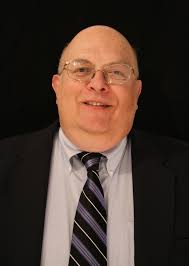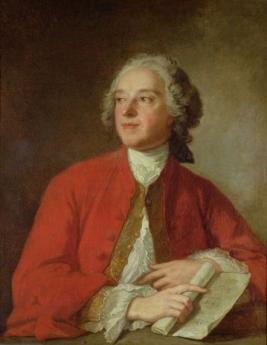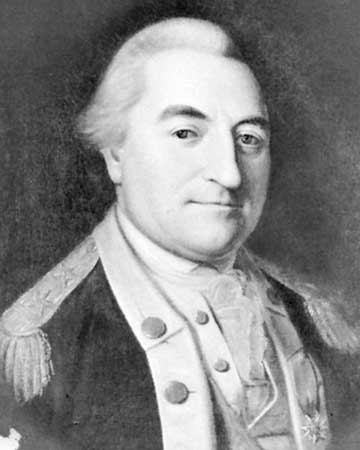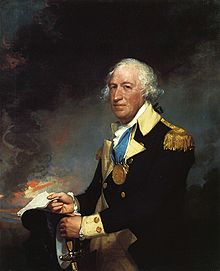Related Topics
Philadelphia Politics
Originally, politics had to do with the Proprietors, then the immigrants, then the King of England, then the establishment of the nation. Philadelphia first perfected the big-city political machine, which centers on bulk payments from utilities to the boss politician rather than small graft payments to individual office holders. More efficient that way.
The British Attack Philadelphia
Fighting in the Revolutionary War lasted eight years; for two years (June 1776 to June 1778) Philadelphia was the main military objective of the British.
Bystanders to the Revolution
It wasn't heroic to everyone.
Quakers: All Alike, All Different
Quaker doctrines emerge from the stories they tell about each other.
Quaker Peace Testimony
New topic 2016-12-04 04:05:49 description
Espionage in the Revolution

|
| John Nagy |
Both sides fighting the Revolutionary War predominantly spoke English as a native language, so it seemed deceptively simple to pick up a little cash for a tidbit of information or two. John Nagy, who has written several books on spies in the Revolution, recently addressed the Right Angle Club about this interesting topic. According to him, Quakers were favorites as spies because they were widely split in their sympathies, and as pacifists were abundant in the civilian societies of the time. Others have commented that the main difference between Conservatives and Free Quakers was that the Free Quakers were mostly of the artisan class and sympathetic to the Revolution, while the Conservatives were mainly of the merchant class, and Tories. But there were many exceptions, and the plain dress Quakers were hard to tell apart and passed freely through the military lines. No doubt many readers will be incensed by such comments, for which we take absolutely no responsibility.

|
| Beaumarchais |
The one main exception to the English-language generalization were the French, who were still smarting from their defeat in the Seven-Years (French and Indian) War. The playwright Beaumarchais was quite active in the French movement to make trouble for the hated English and seems to have stirred up King Louis XVI to be interested in financing rebel trouble-makers, if not to become active combatants. In any event, a wary King thought it was best to send a spy to look over the situation. As detailed in a little pamphlet called The Spy in Carpenter's Hall the Americans were tipped off about the plot. Accordingly, the spy named Bonvoloir was hidden up on the second floor of Carpenter's Hall, while the colonists put on a belligerent falsified performance on the first floor. It is claimed their performance was a convincing one, having the desired effect of creating a report to the King that the colonists were belligerent, warlike, numerous and united. After the Battles of Trenton and Saratoga, the timing was good for using this sort of report to provoke the King into doing what he was mostly of a mind to do, anyway.

|
| Johann de Kalb |
The French were unusual in favoring aristocrats as spies and Johann de Kalb was anther who snooped around, returning later in the form of General de Kalb of military note. The names of British spies, aside from Major Andre, tended to have a Quaker sound to them, like Dunwoody, Cadwalader Jones and the like. It would take deep research to know whether these were Quaker stalwarts or merely black sheep of some family; there is little doubt that sympathies changed with the changing fortunes of battle. Another feature was the careless lying which took place for propaganda purposes. The famous story of Lydia Darragh, a Quaker who allegedly overheard the British officers plotting the surprise attack on Whitemarsh on December 5, 1777, and walked many miles in the snow to warn Washington -- is apparently a much dressed-up version of what happened. The whole Darragh family was engaged in regular spying, and the evidence is that Lydia's brother William was the one who was the messenger. He apparently carried messages under the cloth covering of the buttons on his coat.
.jpg)
|
| Joseph Galloway |
Two types of spying have a greater ring of authenticity. The British needed pilots to guide their ships up the Delaware past fortifications and obstacles. Maps were nice, but it seemed simpler to enlist the efforts of two ladies of easy virtue, Ms. O'Brien and Ms. McCoy, to hang out in taverns and entice local ship pilots to enlist to guide the British ships into Philadelphia. The British spymasters even had the ingenuity to entice a member of the Continental Congress, Joseph Galloway, to turn over the commentary records from which troop strength could be estimated from the food consumed. It is not recorded whether suitable adjustments were made for starving troops, stolen supplies, or fraudulent charges, however.

|
| Benedict Arnold |
Two prominent officials were accused of selling out the side, but an accusation of this sort is easily made, hard to prove. When the examples of Benedict Arnold and Peggy Chew can be verified, however, there is always doubt cast on everyone which some will believe. The system of double signatures was used, so there were two co-treasurers of the United States, Joseph Hellegas and George Clymer. Letters have been produced indicating that one or the other sold the commissary records. Hellegas' home is still today the residence outside Pottstown of a prominent Philadelphia surgeon, and his portrait appears on the ten-dollar bill. In so doing, he started a tradition of Secretaries of the Treasury on the ten-dollar bill, presently occupied by Alexander Hamilton. George Clymer, for his part, was a signer of the Constitution and a favorite of George Washington. Are these stories true? Who knows, but in an eight-year war, John Nagy has accumulated evidence that there were over five hundred documented spies. The essential question remains one of whether to believe the documents.
Originally published: Friday, February 24, 2012; most-recently modified: Thursday, May 16, 2019
| Posted by: gladys gurule | Apr 1, 2012 11:28 PM |